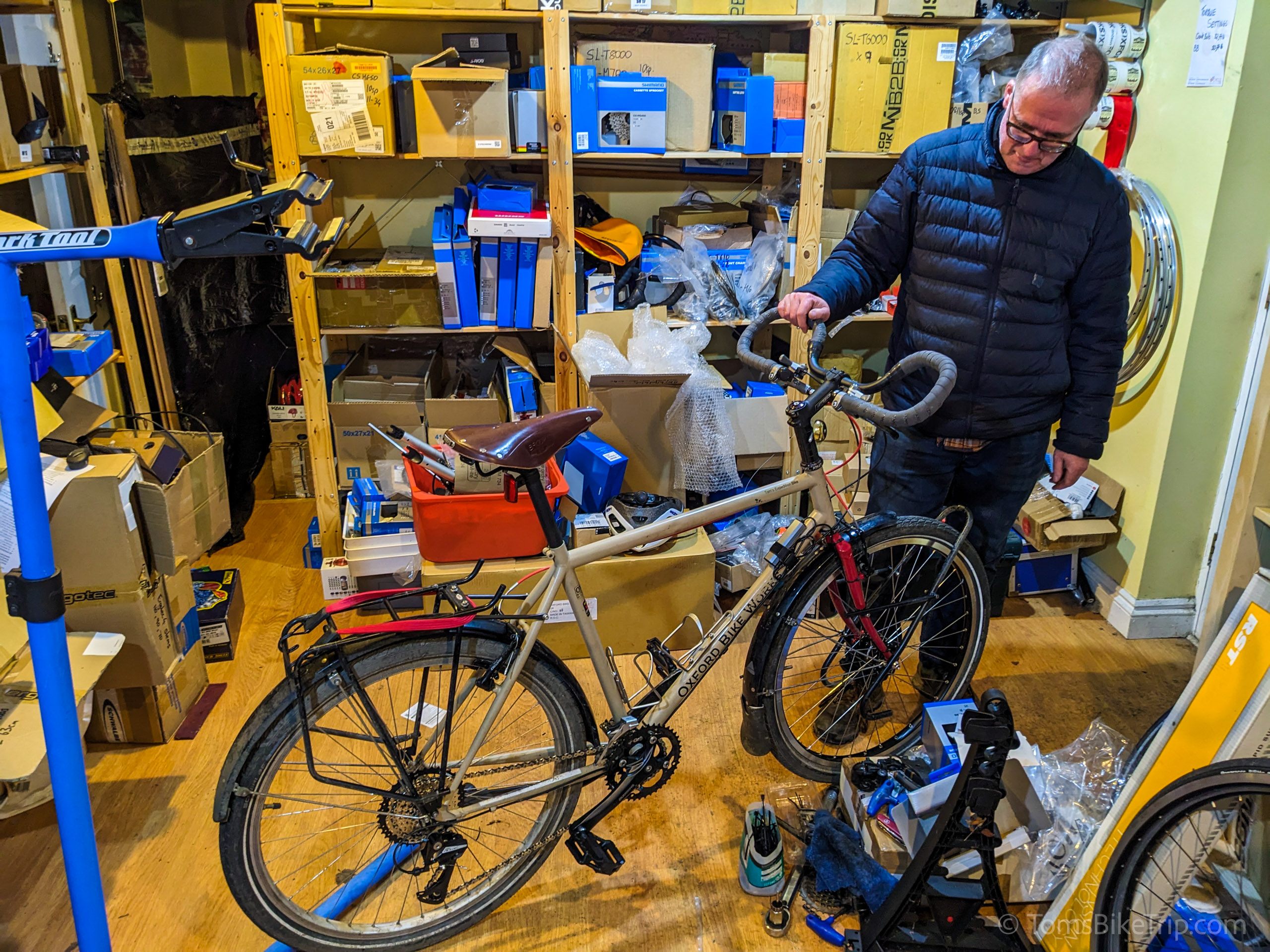Six Basic Principles When Designing A Touring Bike To Go Round The World
If you come from another discipline of cycling – road racing or mountain biking, say, or even old-school leisure touring – some of the choices we made while designing it may seem unusual. But that’s because from the perspective of world bicycle travel, these choices look very different.
A few months of cycle touring will eradicate any interest in shiny components and new-fangled technologies. As mentioned earlier, what matters in a world touring bike (and what doesn’t) is what’s proven by time and miles, not marketing and innovation. This is a sentiment I hear time and time again from countless bicycle travellers.
In my view, then, the priorities for a world touring bike boil down to six things:
- comfort during long days in the saddle in all conditions,
- strength overall and especially in the bike’s luggage-carrying capabilities,
- versatility in the bike’s ability to handle the majority of what the world is likely to throw at it,
- durability in the bike’s core structure and in the components that experience wear,
- serviceability in the components that’ll need maintenance, overhauling and replacement over time and miles, and
- simplicity in the machine as a whole, as its use and maintenance becomes part of your daily routine.
(Note that newness, shininess, costliness, lightness, beauty, and so-called ‘performance’ do not feature in this list.)
A world touring bike succeeds or fails based on these six criteria.
And the best way to ensure success is to stick to tried and tested solutions and concepts – those that have been tried and tested in the real world on real long-haul bicycle journeys. There’s a time and a place to experiment with unproven technology, and cycling round the world is probably not it.

A Quick Note On The Superficial Boringness Of Expedition Touring Bikes
An expedition touring bicycle built on tried and tested principles and designed to do pretty much everything is, by definition, likely to appear pretty ordinary and unremarkable.
That’s because such a bike has only one specialisation, and that is being a generalist.
If you’re used to high-performance competition bikes with price tags in the thousands, the superficial ordinariness of an expedition touring bike can take a bit of getting used to.
The magic, however, is in the details – the details of the parts used and of the way they’re put together. These details will become visible once you’ve actually spent time travelling the world on a bicycle. Otherwise, you’ll probably just see a pretty normal-looking bike.
So if you’re looking for style over substance, speed over strength, innovation over reliability, or the impossibility of a zero-maintenance world touring bike, then I am afraid this article will not help you.
If, on the other hand, you’re getting a nice firm grasp of what really matters on a world-ranging cycle tour, read on…


Something to add?